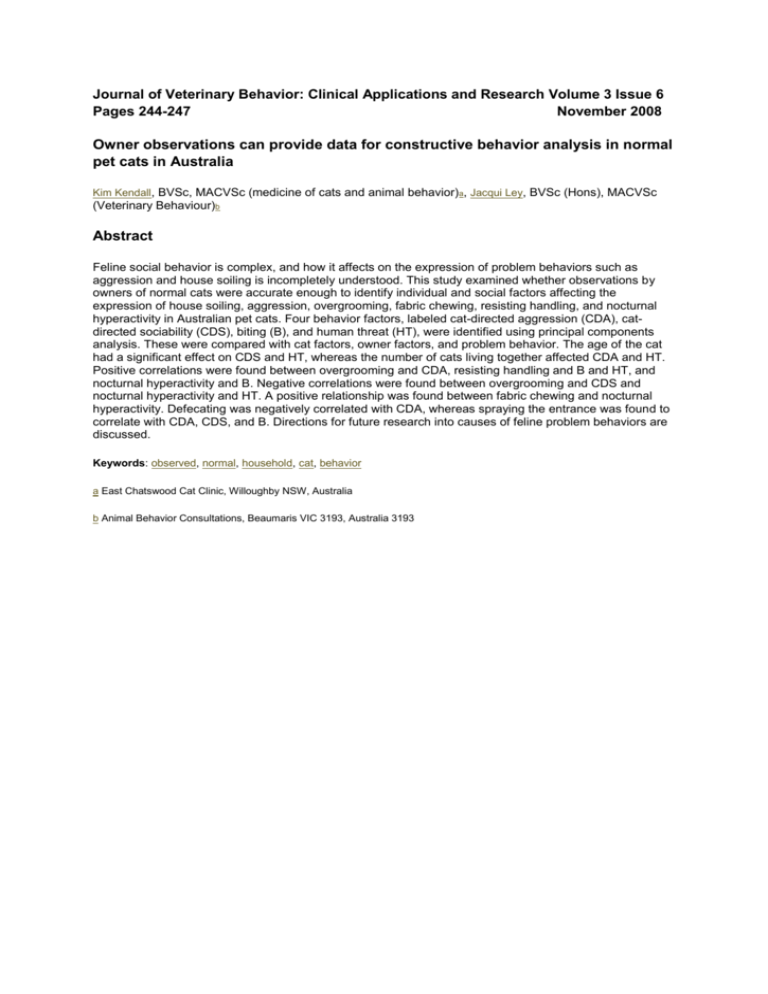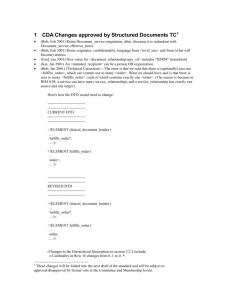Clinical Applications and Research Volume 3 Issue 6 Pages 244-247
advertisement

Journal of Veterinary Behavior: Clinical Applications and Research Volume 3 Issue 6 Pages 244-247 November 2008 Owner observations can provide data for constructive behavior analysis in normal pet cats in Australia Kim Kendall, BVSc, MACVSc (medicine of cats and animal behavior)a, Jacqui Ley, BVSc (Hons), MACVSc (Veterinary Behaviour)b Abstract Feline social behavior is complex, and how it affects on the expression of problem behaviors such as aggression and house soiling is incompletely understood. This study examined whether observations by owners of normal cats were accurate enough to identify individual and social factors affecting the expression of house soiling, aggression, overgrooming, fabric chewing, resisting handling, and nocturnal hyperactivity in Australian pet cats. Four behavior factors, labeled cat-directed aggression (CDA), catdirected sociability (CDS), biting (B), and human threat (HT), were identified using principal components analysis. These were compared with cat factors, owner factors, and problem behavior. The age of the cat had a significant effect on CDS and HT, whereas the number of cats living together affected CDA and HT. Positive correlations were found between overgrooming and CDA, resisting handling and B and HT, and nocturnal hyperactivity and B. Negative correlations were found between overgrooming and CDS and nocturnal hyperactivity and HT. A positive relationship was found between fabric chewing and nocturnal hyperactivity. Defecating was negatively correlated with CDA, whereas spraying the entrance was found to correlate with CDA, CDS, and B. Directions for future research into causes of feline problem behaviors are discussed. Keywords: observed, normal, household, cat, behavior a East Chatswood Cat Clinic, Willoughby NSW, Australia b Animal Behavior Consultations, Beaumaris VIC 3193, Australia 3193



